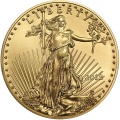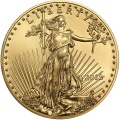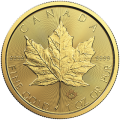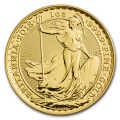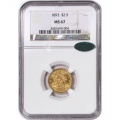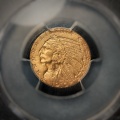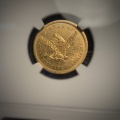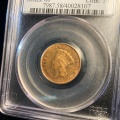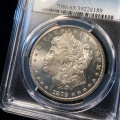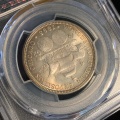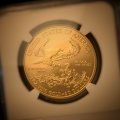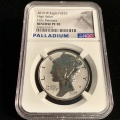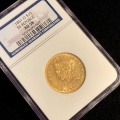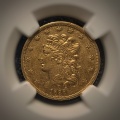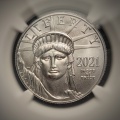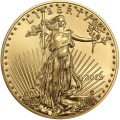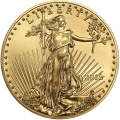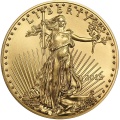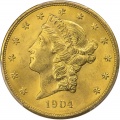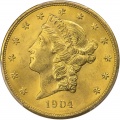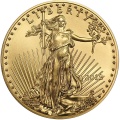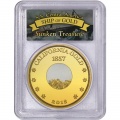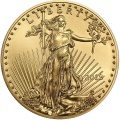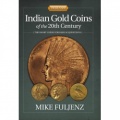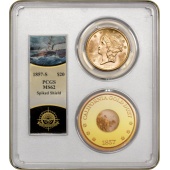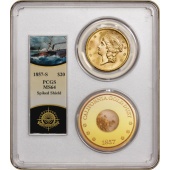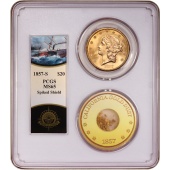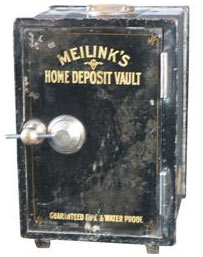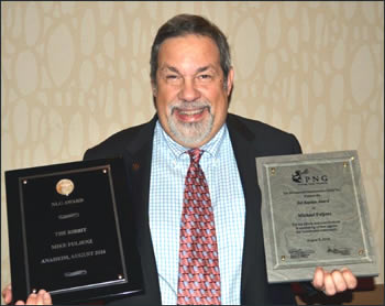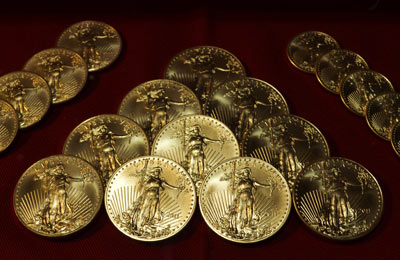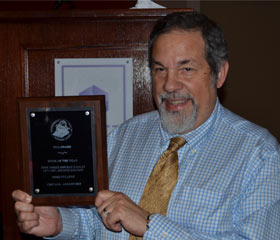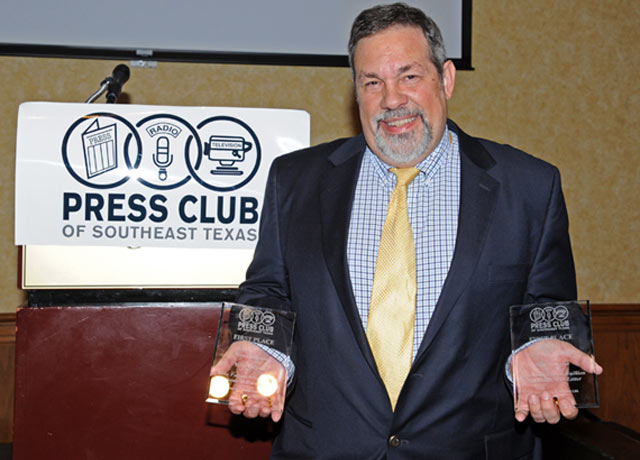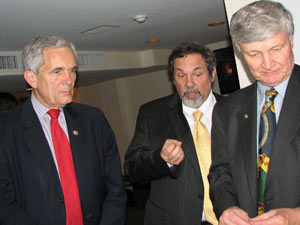Q&A with Dr. Mike Fuljenz
America’s Gold Expert®
on Gold Recovered from the SS Central America
Q. - As you surveyed many of the 3,000+ gold coins and gold dust, what impressed you the most?
There were some sub-standard coins which I rejected, being a former grading service grader, but I was amazed at how many of these 160-year-old coins had such strong original luster and original mint bloom. Anybody who acquires such a coin will be immediately struck with its brilliant luster. This is also true of the gold dust, although it is, of course, much smaller. Bob Evans applied a proprietary saline solution to the gold dust to reveal the luster.
Q. - Speaking of gold dust, how was that preserved and why is it so important?
Gold dust was a major medium of exchange during the California Gold Rush. A “pinch” of gold was a unit of exchange in commerce. When properly measured, a gold pinch equaled the gold value of a privately minted 50-cent California fractional gold coin. In California in 1857, two pinches of gold could buy a bag of flour, but most miners went to a saloon before they went to the general store. In a saloon, one pinch would buy a shot of whiskey, so the saloon owners would hire bartenders with large thumbs to hold a bigger “pinch” of gold dust. That may sound like cheating, but the cheating went both ways. Some of the miners might mix a little yellow dust with their gold to make their initial drinking spree last longer!
Genuine California Gold Rush gold dust is rare, as it was typically melted into an ingot or used for coin production. Much of the gold dust on sale now was not lying free on the floor of the ocean. It was discovered in hand-sewn sacks, known as “pokes,” much of it locked away in a safe aboard the SS Central America.
Q. - These coins were first recovered in 1988, so why has it taken so long for them to come to market?
Over 7,000 gold coins were recovered from the SS Central America during the ship’s original discovery phase in 1988. The exploration crew used an undersea robot they called Nemo, a 12,000-pound remotely operated exploration vehicle with the capacity of recovering something as big as a 1,000-pound anchor or as small as a dime-sized coin without damaging its surface. The bulk of the first wave of coins were brought up during the following summer of 1989. That first batch of gold coins that was recovered and conserved was graded by PCGS in the late 1990s and consisted mostly of 1856-S and 1857-S Liberties.
Q. - Why wait so long to recover the second wave of gold coins?
There were legal challenges along the way, but those impediments were finally resolved. The second batch recovered in 2014 consists of far fewer gold coins – only about 3,100 gold coins – including some additional 1856-S and 1857-S $20 Liberties as well as a wide variety of other gold coins, such as $10 Eagles, $5 Half Eagles, $2.50 Quarter Eagles, $3 and $1 Gold pieces as well as some territorial gold coins, gold bars and gold dust. Due to all the demand and inquiries prior to the coins being available, I believe the market will absorb most of these coins quickly.
Q. - How can we be sure these coins came from the SS Central America?
The Chief Scientist for the SS Central America expedition since its inception in 1983, Bob Evans, has been the exclusive agent for restoring and authenticating these pieces of numismatic history, which are remarkably well preserved, as they have essentially been untouched by human hands since their minting in the 1850s. His signature is on the authentication certificate inside the innovative PCGS holder that includes a pinch of gold with every coin.
Q. - What are the special challenges of restoring a coin that has been so long in salt water and sediment?
Chief scientist of the expedition Bob Evans took particular care with each coin to remove deposits on the surfaces of the coins in order to reveal the coin’s original luster. In many cases, the ocean and the sediment covering the coins protected the surface of the coin. His approach was never to harm the surface of the coin but to reveal the coin’s true surface. His proprietary soaking solution to remove the grime was neither acidic nor base, so it did not affect the flow lines of the original strike, so the flow lines and luster remained undisturbed.
Q - Why were some coins from other U.S. branch mints found in the SS Central America wreckage?
The explorers flooding the California Gold Rush came from all over the U.S. and the world. They brought gold from the Philadelphia Mint as well as the branch mints in New Orleans, Charlotte and Dahlonega, Georgia, all of which were operational from the late 1830s. The San Francisco Mint was not launched until 1854, so all of the officially minted circulating U.S. gold in California prior to 1854 came from these other mints. These coins were still in circulation in 1857 and made up part of the fortune that the gold seekers were bringing home to their Eastern families when the SS Central America was lost in 1857.
Within the first year of its operation, the San Francisco mint turned $4 million in gold bullion into coins, with more coins minted each year, so the majority of the coins found in the SS Central America wreckage were San Francisco “S” mint coins, but there are quite a few from the other official U.S. mints as well.
One example of a New Orleans Mint gold coin on the ship was described by Bob Evans, Chief Scientist of the SS Central America project. It was the 1854-O Quarter Eagle, counter-stamped by J.L. Polhemus, a druggist in Sacramento, California. Evans said it was “made in New Orleans at a time when the New Orleans Mint may well have been using California gold to mint coins. Gold Rush gold got around back then! So this coin made its way all the way to Sacramento, where a shop-keep hammered his name on it. And then, somehow, it made it on to the S.S. Central America, and then, somehow, we brought it back up 150 years later, a couple of hundred miles from North Carolina. That’s a great, full-circle journey!”
Q - How long was it before the nation discovered that the SS Central America had been lost at sea?
The tragedy was known almost immediately, and it spread like wildfire. The new technology of telegraphy was like the “Internet” of the day and the news went “viral,” as there were telegraphs in most major cities. The ship went down on September 12, 1857 and the public reaction was almost like what we experienced on September 11, 2001. Adjusted for the era’s population and wealth, the two tragedies were similar: 9/11 struck our financial center in New York, and so did the sinking of the SS Central America. The gold on the SS Central America was vital to help prop up some major New York banks during the Panic of 1857, which had already begun the previous month with some major New York bank failures, so news of the ship’s stop in Havana and its expected arrival date in New York were widely followed in the news.
When news of the hurricane spread, people became concerned about the safety of the ship, so when the first survivors straggled ashore in Savannah, Georgia, news of the sinking spread fast. With over 450 dead, the human interest stories of men sacrificing their lives to save the women and children were as gripping as the true-life stories of the New York City firemen and other first responders sacrificing their lives to rescue those trapped in the Twin Towers on 9/11, so hundreds of newspapers ran long front-page accounts of the last hours on board ship in the survivors’ own words – of how the men formed bucket brigades that went on for hours, all night long, but to no avail. These stories continued for months in over 200 newspapers.
In addition, Commander William Herndon became a national hero after he nobly went down with the ship. Two cities, in Virginia and Pennsylvania, were named after him, as well as two U.S. Navy ships. To this day, there stands a statue and plaque erected at the U.S. Naval Academy in his honor, which reads:
Commander William Lewis Herndon
1818-1857
Naval Officer - Explorer - Merchant Captain
In command of the Central America, home-bound with California gold seekers
Captain Herndon lost his life in a gallant effort to save
ship and lives during a cyclone off Hatteras, September 12, 1857.
"Forgetful of self, in his death he added a new glory to the annals of the sea"
- Matthew Fontaine Maury
Q - What changes were made to protect lives and gold shipments after the Central America tragedy?
The loss of the SS Central America made Californians think more about keeping more of their wealth closer to home and not shipping so much of it out. This convinced Californians that they should start developing more industry locally rather than sending money back east. Those in the east, of course, didn’t like this idea very much, so the loss of the Central America encouraged businessmen, politicians and many editorialists at the leading newspapers to promote the construction of a Transcontinental Railroad in order to avoid the risks of the sea or overland covered wagons, subject to attacks or natural barriers.
This Transcontinental Railroad opened in 1869, which led directly to the formation of the Carson City Nevada mint in 1870, a mint made necessary by the discovery of silver in Nevada’s Comstock Lode.

